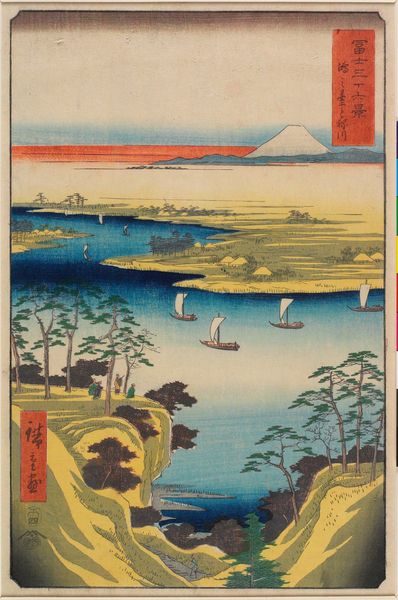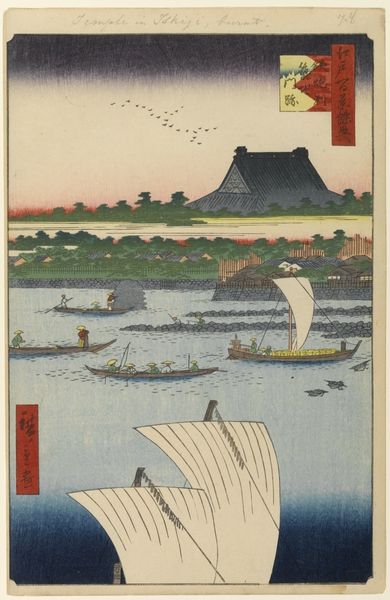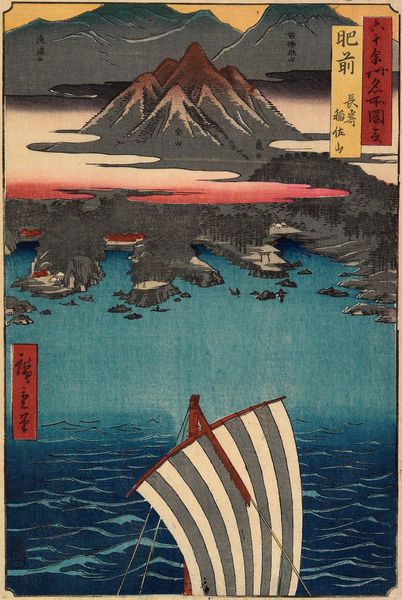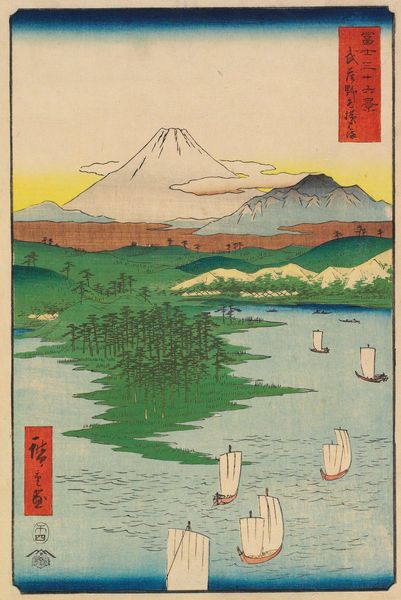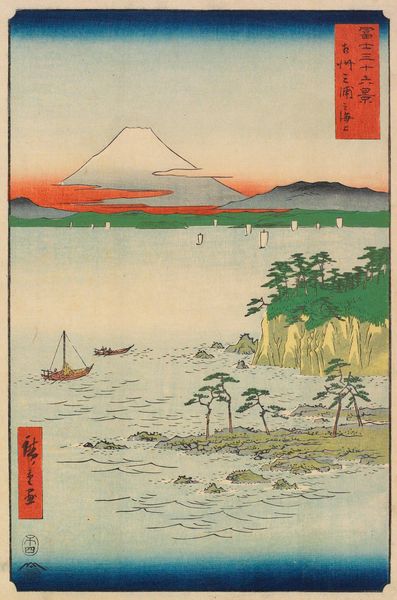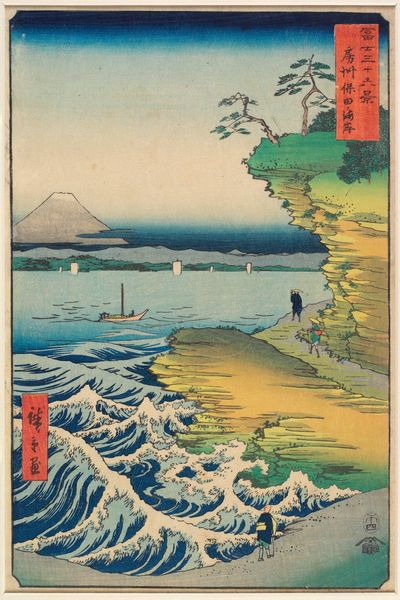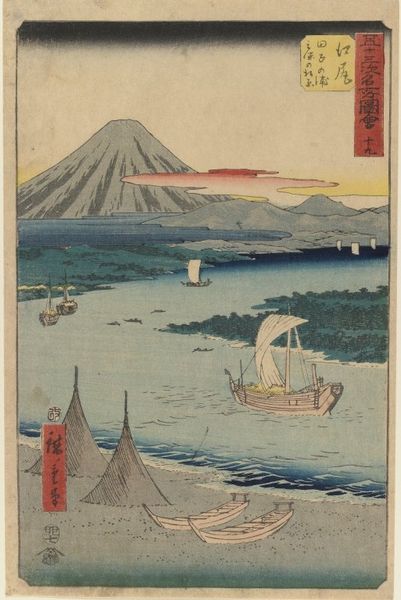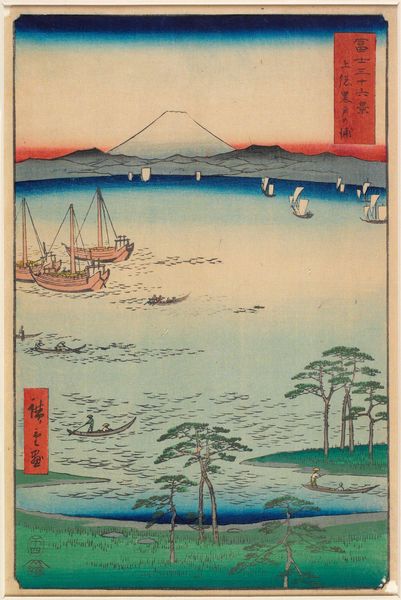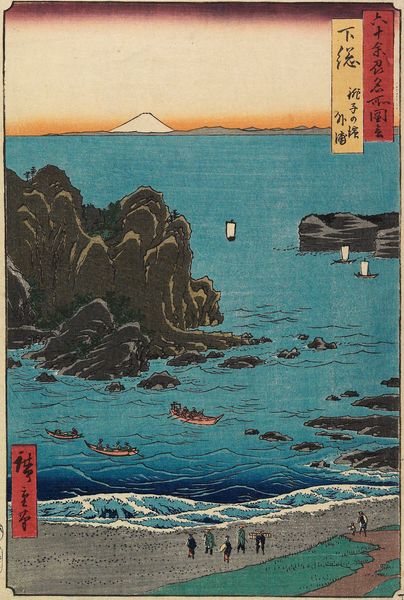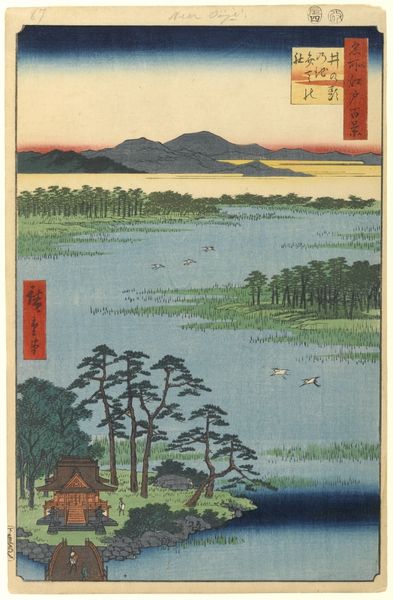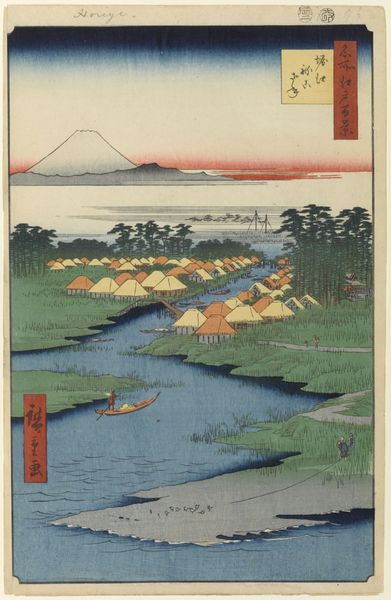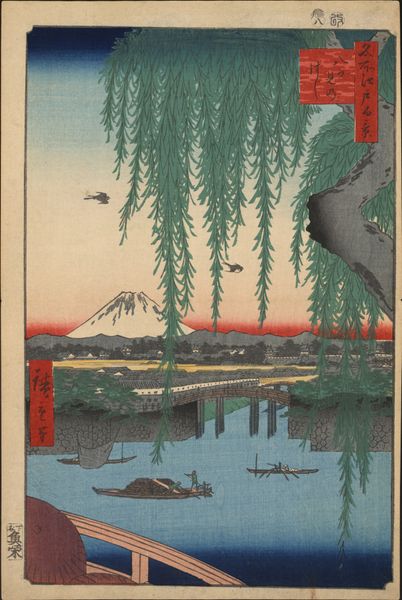
print, plein-air, woodblock-print
#
boat
# print
#
plein-air
#
asian-art
#
landscape
#
ukiyo-e
#
woodblock-print
#
watercolor
Copyright: Public domain
Editor: So, this is "57 (67) Mitsumata Wakarenofuchi" by Utagawa Hiroshige, created in 1857. It’s a woodblock print, and I’m really drawn to the way the water dominates the scene, this deep, rich blue. How would you interpret the effect of these repeated motifs of laborers and boats across this landscape? Curator: Well, as a materialist, I’m immediately drawn to thinking about the labor embedded in this print. Not only the labor of the workers depicted on the boats – seemingly transporting materials - but also the unseen labor of the woodblock carvers and printers. The Ukiyo-e style itself, intended for mass consumption, tells a story about art production at this time. Do you consider the act of viewing and possessing this piece, and others like it, an act of labor? Editor: I never thought about viewership as a form of labor, but it makes sense in a consumer context. So, how does the medium – a print – impact the social value and distribution of images? Curator: Exactly! Woodblock printing enabled relatively inexpensive reproductions, facilitating a wider audience to access this artistic vision. Consider, too, that the creation of these prints would have depended on specialists focusing on tasks: drawing, carving, printing and so on. These modes of art production changed drastically during that period in Japan. The prints aren't necessarily 'high art', instead these were produced to engage with a market system. Editor: That’s fascinating, reframing landscape as commodity and highlighting the process and makers involved changes everything. Curator: It encourages us to investigate beyond the idyllic surface and consider the social structures that underpinned its creation and circulation. It changes the way we see the function of images themselves. Editor: Definitely. I’ll be thinking more about those layers of making – the labor – the next time I see a print.
Comments
No comments
Be the first to comment and join the conversation on the ultimate creative platform.
